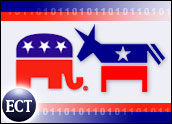
A host of trends in the technology industry could lead to a sharp increase in licensing fees next year and beyond, and enterprises should consider renegotiating existing deals now, research firm Gartner says in a new report.
The firm said that even if per-unit software prices change little, as expected, total license fees paid could double on average by the end of 2006 as a result of moves to dual-core processors and expanded use of server virtualization and computing on demand.
Gartner said the pricing policies of many large enterprise-friendly software companies, including Oracle, IBM and Sybase, could result in dramatically higher expenses for customers. Those policies include charges for each unit of processing power applied to any given software application.
New Hardware Realities
Microsoft recently announced it would not base its future license fee structure on how many cores are in a hardware device’s chip, but instead on the number of processors.
Because dual-core chips made by IBM, Intel and AMD especially are becoming more widely used, any machine that is currently charged for a single license unit could be assessed for two.
Gartner research director Alexa Bona said companies will evolve their policies to reflect the new hardware realities, but it will take time.
“Software companies will generally charge for the total potential CPU capacity regardless of what is being used,” Bona said. “They will have to change their policies, but that change will not come quickly. It is therefore crucial for enterprises to understand the risks and protect themselves by starting contract negotiations with their vendors now.”
Get Me Rewrite
Gartner recommends that software customers begin opening negotiations now with their vendors to better define terms that apply to dual-core processors and virtual servers. It suggests targeting a structure that will ensure that fees do not rise more than 25 percent on dual-core machines, noting that such computers typically do not actually have twice the computing power of one with a single core.
Bona and other analysts say that software vendors should be willing participants in the discussion, since the industry is not in a position of strength when it comes to such negotiations.
Many top software companies have posted some shaky earnings in the past year, and most projections are for another period of slow growth in 2005 and into 2006.
Two for One
However, many large tech firms that supply both software and hardware to enterprises — Sun, for instance, and IBM — might be counting on those expanded licensing revenues to balance the lower hardware costs that enterprises will enjoy thanks to advances in the on-demand evolution.
“Microsoft is outside that world where their customers can point to the savings on hardware from dual-core processors or virtualization and justify the added expense on the software side,” Yankee Group senior analyst Laura DiDio said.
In fact, Gartner said software fees could rise more than enough to wipe out any such hardware-based savings.
DiDio said the software industry will catch up with the changes in the hardware space, but that traditional licensing arrangements might need to take a back seat to new approaches in order to create harmony.
A recent study by Macrovision and the Software & Information Industry Association (SIIA), in fact, found that software pricing itself is in a state of flux. While many vendors are preparing to move to Web-based and subscription options, most enterprises still feel more comfortable with buying licenses on a per-seat basis.











































